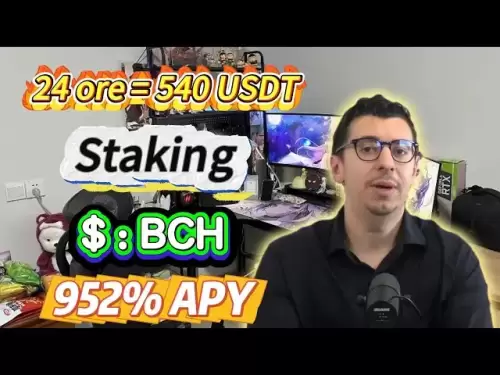-
 Bitcoin
Bitcoin $108,703.4836
0.45% -
 Ethereum
Ethereum $2,576.6839
1.58% -
 Tether USDt
Tether USDt $1.0001
0.00% -
 XRP
XRP $2.2924
-0.87% -
 BNB
BNB $660.2136
0.01% -
 Solana
Solana $151.4729
-0.29% -
 USDC
USDC $1.0000
0.00% -
 TRON
TRON $0.2866
0.04% -
 Dogecoin
Dogecoin $0.1698
0.82% -
 Cardano
Cardano $0.5831
0.13% -
 Hyperliquid
Hyperliquid $37.9814
-3.97% -
 Bitcoin Cash
Bitcoin Cash $503.9489
1.93% -
 Sui
Sui $2.8994
0.74% -
 Chainlink
Chainlink $13.5429
0.38% -
 UNUS SED LEO
UNUS SED LEO $9.0693
-0.19% -
 Stellar
Stellar $0.2524
0.15% -
 Avalanche
Avalanche $18.1959
1.02% -
 Shiba Inu
Shiba Inu $0.0...01180
1.48% -
 Toncoin
Toncoin $2.7601
-0.76% -
 Hedera
Hedera $0.1606
0.96% -
 Litecoin
Litecoin $86.6105
0.26% -
 Monero
Monero $315.7691
-0.56% -
 Polkadot
Polkadot $3.3911
0.25% -
 Dai
Dai $1.0001
0.03% -
 Ethena USDe
Ethena USDe $1.0002
0.02% -
 Bitget Token
Bitget Token $4.3076
-0.05% -
 Uniswap
Uniswap $7.5901
3.66% -
 Aave
Aave $288.0954
0.35% -
 Pepe
Pepe $0.0...01002
1.64% -
 Pi
Pi $0.4578
0.09%
How to avoid slippage losses in ETH trading?
Slippage in ETH trading can be minimized by using limit orders, trading during less volatile times, and splitting large orders into smaller chunks.
Apr 21, 2025 at 11:35 pm
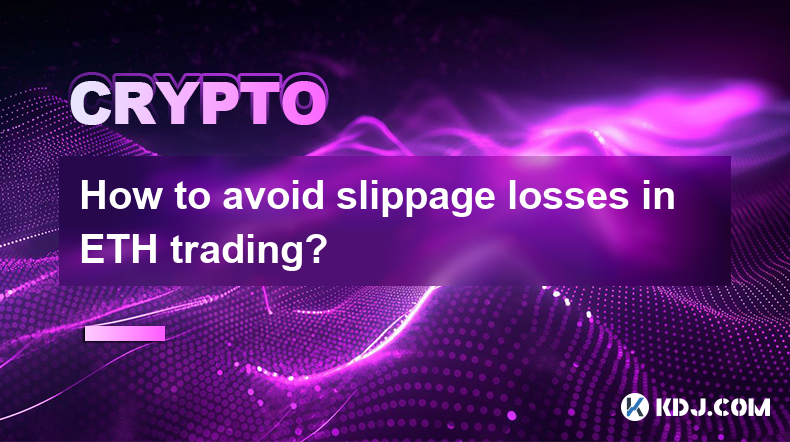
Slippage is a common issue faced by traders in the cryptocurrency market, particularly when dealing with high-volume assets like Ethereum (ETH). Slippage occurs when there is a difference between the expected price of a trade and the actual price at which the trade is executed. This can lead to losses, especially in volatile markets. Understanding and implementing strategies to minimize slippage can significantly enhance your trading experience and protect your investments.
Understanding Slippage in ETH Trading
Before diving into strategies to avoid slippage, it's crucial to understand what causes it. Slippage is primarily caused by market volatility and liquidity. When trading ETH, if the market is experiencing high volatility, the price can change rapidly between the time you place an order and the time it is executed. Additionally, if there is low liquidity in the market, your order might move the price significantly, leading to higher slippage.
Choosing the Right Trading Platform
One of the first steps to minimize slippage is to choose a trading platform that offers high liquidity and low latency. Platforms with high liquidity will have a larger number of buyers and sellers, which can help ensure that your trades are executed closer to your desired price. Some popular platforms for trading ETH with high liquidity include Binance, Coinbase Pro, and Kraken. Additionally, platforms with low latency can execute your orders faster, reducing the chance of price changes during the execution process.
Utilizing Limit Orders
A practical strategy to avoid slippage is to use limit orders instead of market orders. When you place a market order, it is executed at the best available price in the market at that moment, which can lead to slippage if the market is volatile. On the other hand, a limit order allows you to set a specific price at which you want your trade to be executed. If the market reaches your specified price, the order will be filled; if not, the order will remain pending until the market price meets your limit.
- To place a limit order on most trading platforms, follow these steps:
- Navigate to the trading section of the platform.
- Select ETH as the asset you want to trade.
- Choose whether you want to buy or sell ETH.
- Enter the amount of ETH you want to trade.
- Set your desired price in the "Limit Price" field.
- Review your order and submit it.
Trading During Less Volatile Times
Another effective way to reduce slippage is to trade during times when the market is less volatile. Volatility in the ETH market can be influenced by various factors, including news events, market sentiment, and trading volume. Typically, trading volumes and volatility are lower during off-peak hours, such as late at night or early in the morning. By executing your trades during these times, you can potentially reduce the risk of slippage.
Monitoring Market Depth
Understanding the market depth can also help you minimize slippage. Market depth refers to the volume of buy and sell orders at different price levels in the order book. By analyzing the order book, you can get a sense of the liquidity available at various price points. If you see that there is a significant amount of liquidity at your desired price level, it is more likely that your order will be filled without causing a substantial price movement.
- To monitor market depth, you can use the following steps:
- Open the trading platform and navigate to the ETH trading pair.
- Look for the order book section, which displays the current buy and sell orders.
- Analyze the volume of orders at different price levels to gauge the market depth.
Using Slippage Tolerance Settings
Some trading platforms offer a feature called slippage tolerance, which allows you to set a maximum percentage of slippage you are willing to accept. This can be particularly useful for large orders, as it helps ensure that your trade is not executed at a price that deviates too far from your desired price. By setting a slippage tolerance, you can have more control over the execution of your trades and minimize potential losses.
- To set a slippage tolerance on platforms that support this feature, follow these steps:
- Go to the advanced settings or trading options section of the platform.
- Look for the slippage tolerance or slippage percentage setting.
- Enter the maximum percentage of slippage you are willing to accept.
- Save your settings and proceed with your trade.
Splitting Large Orders
For traders dealing with large volumes of ETH, splitting your orders into smaller chunks can help reduce slippage. When you place a large order, it can significantly impact the market price, leading to higher slippage. By breaking your order into smaller parts and executing them at different times, you can minimize the impact on the market and achieve better average execution prices.
- To split a large order, consider the following steps:
- Determine the total amount of ETH you want to trade.
- Divide the total amount into smaller, more manageable chunks.
- Place each smaller order separately, spacing them out over time to avoid impacting the market too heavily.
Frequently Asked Questions
Q: Can slippage be completely eliminated in ETH trading?
A: No, slippage cannot be completely eliminated due to the inherent nature of market dynamics and volatility. However, by implementing the strategies discussed above, you can significantly reduce the impact of slippage on your trades.
Q: How does the size of my ETH trade affect slippage?
A: The size of your ETH trade can significantly impact slippage. Larger orders are more likely to move the market price, leading to higher slippage. By splitting large orders into smaller parts, you can minimize this effect and achieve better execution prices.
Q: Are there any tools or indicators that can help predict slippage in ETH trading?
A: While there are no specific tools or indicators designed solely to predict slippage, you can use market depth indicators and volatility charts to gauge the potential for slippage. Monitoring these metrics can help you make more informed trading decisions and adjust your strategies accordingly.
Q: Does the type of cryptocurrency affect the likelihood of slippage?
A: Yes, the type of cryptocurrency can affect the likelihood of slippage. Cryptocurrencies with higher liquidity, such as ETH, tend to have lower slippage compared to less liquid assets. However, even with high-liquidity assets, slippage can still occur, especially during periods of high market volatility.
Disclaimer:info@kdj.com
The information provided is not trading advice. kdj.com does not assume any responsibility for any investments made based on the information provided in this article. Cryptocurrencies are highly volatile and it is highly recommended that you invest with caution after thorough research!
If you believe that the content used on this website infringes your copyright, please contact us immediately (info@kdj.com) and we will delete it promptly.
- Onyxcoin (XCN) vs. Solana (SOL): A Promising Bet in the Crypto Game?
- 2025-07-09 00:30:12
- CoreWeave's Bold Bet: How AI is Reshaping Bitcoin Mining
- 2025-07-09 00:30:12
- Coinbase (COIN) IPO Flashback: Is the Rally Overextended or Just Getting Started?
- 2025-07-08 22:50:12
- Bitcoin Price, Elon Musk, and BTCBULL: A Bullish Trifecta?
- 2025-07-09 00:10:12
- Toonie Trouble: Spotting Fakes Like an Expert
- 2025-07-08 22:50:12
- Coinbase, Crypto Stocks, and Ozak AI: Riding the Web3 Wave in Style
- 2025-07-08 23:10:14
Related knowledge
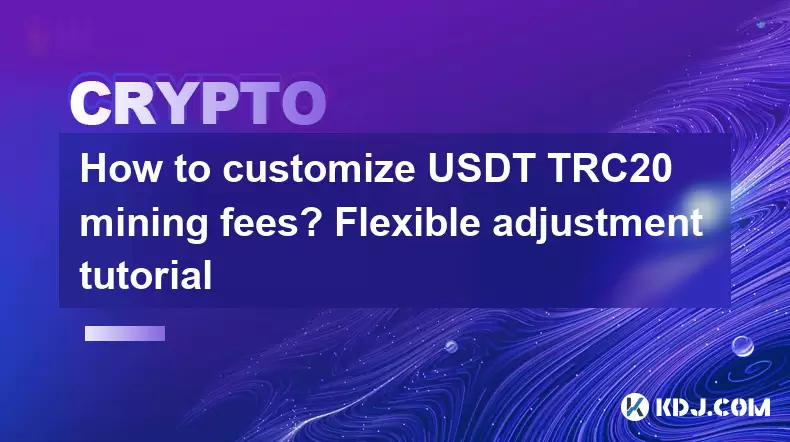
How to customize USDT TRC20 mining fees? Flexible adjustment tutorial
Jun 13,2025 at 01:42am
<h3>Understanding USDT TRC20 Mining Fees</h3><p>Mining fees on the TRON (TRC20) network are essential for processing transactions. U...
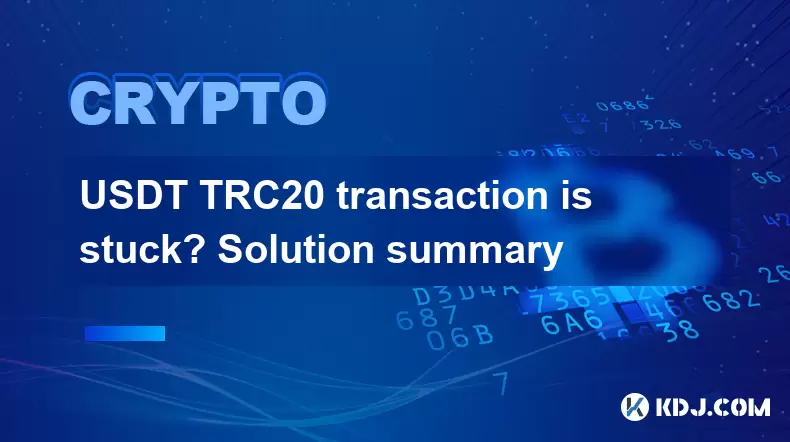
USDT TRC20 transaction is stuck? Solution summary
Jun 14,2025 at 11:15pm
<h3>Understanding USDT TRC20 Transactions</h3><p>When users mention that a USDT TRC20 transaction is stuck, they typically refer to ...
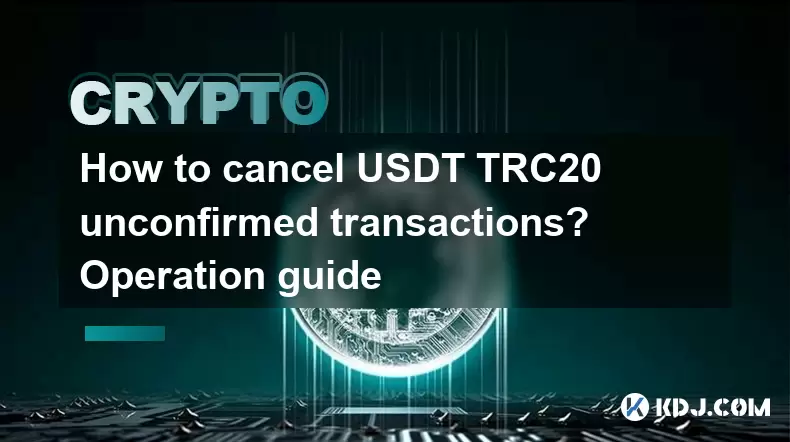
How to cancel USDT TRC20 unconfirmed transactions? Operation guide
Jun 13,2025 at 11:01pm
<h3>Understanding USDT TRC20 Unconfirmed Transactions</h3><p>When dealing with USDT TRC20 transactions, it’s crucial to understand w...
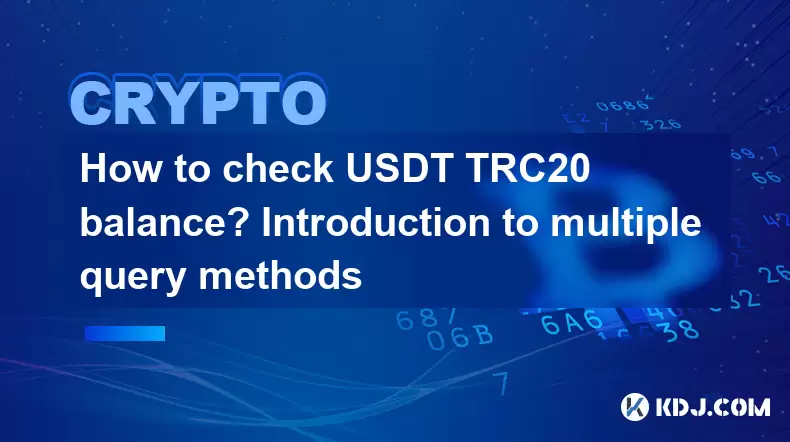
How to check USDT TRC20 balance? Introduction to multiple query methods
Jun 21,2025 at 02:42am
<h3>Understanding USDT TRC20 and Its Importance</h3><p>USDT (Tether) is one of the most widely used stablecoins in the cryptocurrenc...
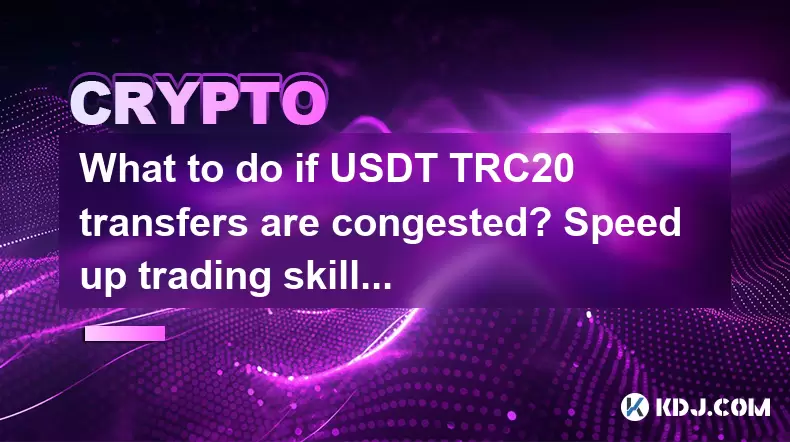
What to do if USDT TRC20 transfers are congested? Speed up trading skills
Jun 13,2025 at 09:56am
<h3>Understanding USDT TRC20 Transfer Congestion</h3><p>When transferring USDT TRC20, users may occasionally experience delays or co...
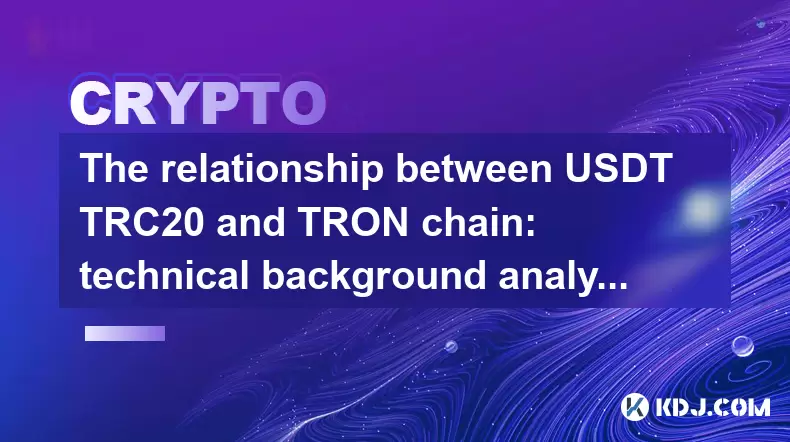
The relationship between USDT TRC20 and TRON chain: technical background analysis
Jun 12,2025 at 01:28pm
<h3>What is USDT TRC20?</h3><p>USDT TRC20 refers to the Tether (USDT) token issued on the TRON blockchain using the TRC-20 standard....

How to customize USDT TRC20 mining fees? Flexible adjustment tutorial
Jun 13,2025 at 01:42am
<h3>Understanding USDT TRC20 Mining Fees</h3><p>Mining fees on the TRON (TRC20) network are essential for processing transactions. U...

USDT TRC20 transaction is stuck? Solution summary
Jun 14,2025 at 11:15pm
<h3>Understanding USDT TRC20 Transactions</h3><p>When users mention that a USDT TRC20 transaction is stuck, they typically refer to ...

How to cancel USDT TRC20 unconfirmed transactions? Operation guide
Jun 13,2025 at 11:01pm
<h3>Understanding USDT TRC20 Unconfirmed Transactions</h3><p>When dealing with USDT TRC20 transactions, it’s crucial to understand w...

How to check USDT TRC20 balance? Introduction to multiple query methods
Jun 21,2025 at 02:42am
<h3>Understanding USDT TRC20 and Its Importance</h3><p>USDT (Tether) is one of the most widely used stablecoins in the cryptocurrenc...

What to do if USDT TRC20 transfers are congested? Speed up trading skills
Jun 13,2025 at 09:56am
<h3>Understanding USDT TRC20 Transfer Congestion</h3><p>When transferring USDT TRC20, users may occasionally experience delays or co...

The relationship between USDT TRC20 and TRON chain: technical background analysis
Jun 12,2025 at 01:28pm
<h3>What is USDT TRC20?</h3><p>USDT TRC20 refers to the Tether (USDT) token issued on the TRON blockchain using the TRC-20 standard....
See all articles

























